After breakfast and doing the laundry we went with Gerald and Helen south to a British Heritage house. Gerald took us on the country roads and we enjoyed again looking at the variety of houses and landscapes. Some parts seemed like NZ until you looked at the hedgerows and the stone houses.
We had talked about language last night and were told that in England the morning break is called 'morning coffee' not ‘morning tea’
. So we stopped for ‘morning coffee’ at a tea rooms where only I had coffee!! The tea rooms were at a Water Gardens and the lady at the counter was rather confused that we only wanted drinks and cakes and we didn’t want to pay to go into the gardens. We promised to go straight back out afterwards. Later I chatted to the woman serving who has a sister living in Whangerei and who will be revisiting NZ in 2011. She was very complimentary about the South Island.
Gerald and Helen are Historic Places members so we all had entry to the historic property at Oxborough, Oxburgh Hall (they are spelt differently). There were a lot of children around dressed as fairies and wizards as a special event for them. Most of the houses also have a regular activity like a task sheet for children. Here they were encouraged to find things of interest in the grounds and add them to a table in one of the ‘follies’ outside.
The hall was built by Sir Emund Bedingfield in 1482 as a moated house with a gatehouse tower. The family has always been Catholic so have an interesting history. The 2nd Sir Edmund guarded Catherine of Aragon and his son was Princess Elizabeth’s gaoler. The family lived in the home for 500 years and the 6th baronet a married a wealthy woman so was able to renovate. The buildings belong to the National Trust but not all the contents, so no photos were allowed inside.
It was the contents that especially interested us at first
. The paintings were often of famous people but the rooms also had cabinets filled with ‘stuff’. These were usually itemised on laminated sheets that we could refer to. In some cabinets there were three sheets for just one shelf. We were all taken with a display of ivory carving, especially the lace carved from ivory. I also liked the letter holder which was made of a silver wishbone on a mother of pearl shell. There were some lovely miniatures, cameo brooches and limogues plates.
This room had a crayon drawing of Sybil, Dowager Lady Bedingfield, done when she was 90. She was buried on what would have been her 102nd birthday. She said the room was so cold she was already preserved. The family has all been long lived as the present Baronet is 90. Family still live in the private parts of the building.
Many of the walls in the halls were covered in Gilt leather. Leather is covered in thin sheets of silver then embossed, gilded and painted. It was in very good condition. There was a small sample piece we were allowed to touch.
The room steward in the library was a former near neighbour of Gerald and Helen so we spent a bit longer here. The books were on open shelves and he said they are taken down and dusted by the Trust regularly. The hall had 4 sides with a central courtyard but he told us that at some stage the original Great Hall was demolished and some time later the 4th side rebuilt
. This room had a secret door in the bookshelves and also another secret door in one wall for the servants.
The next door room was changed from a library to a dining room and much of the contents were recycled. The panels came from a fire damaged building and the dresser incorporated a former bed. Much of the other wood used in the room was linden wood that had come from Antwerp.
The most historic item in the building is known as the Oxburgh Hangings. These were velvet embroidery that had been major wall hangings and then were used as bed hangings. They were embroidered by Mary Queen of Scots and Bess of Hardwich when Mary was in the custody of Bess’s husband, the Earl of Shrewsbury. The family that owned the Hall have always been a Catholic family, hence the connection. The animals in the patterns were very unrealistic and it was pointed out that they would have used illustrations from books and would never have seen most of the ones they embroidered, like jaguars.
The next room had 2 huge wall hangings but the bottom border was missing. The room steward told us that damp has meant the bottoms of many tapestries are in poor condition. He also told us that they cannot be rolled up so it can be a problem to find walls large enough to hang them. It also had an ebony box with stone birds inlaid. The stones were used like marquetry and were translucent with a very vivid blue amongst other colours
. The technique came from Florence in the 16th century.
We went up a spiral staircase to the top for the view then back down to the guardroom which would have been the wardrobe in the past. Nearby was the corner where the toilet would have been and the steward there told us the ammonia would have helped keep the moths away. It was later an actual priests hole and John and I each earned a sticker by dropping in. It was quite high inside once you crawled in and reasonably spacious but I would not have wanted to be there if the lid was down. The steward pointed out the alternative was to be hung, drawn and quartered which would have been a good incentive to get in. It was a successful priest’s hole as no one was ever discovered. This was also the only place inside where photos were allowed to be taken.
We made our way past the posing swans on the moat to the chapel in the grounds. This is privately owned but the family allows it to be viewed. The chapel is also used often for weddings. There was a large alter piece that was not originally in the church that the Trust own. The rest of the chapel had family tombs and memorials.
After lunch in a nearby pub we drove back to Kings Lynn and did a brief drive around the historic part. We went through the south gate which is the main remaining part of the old city walls. I was amazed to see a sign saying it is a Hanseatic city as I had thought that only the three German cities (Bremen, Hamburg and I forget) had that title
. But Kings Lynn was one of the cities they traded with at the time. We saw the old Corn Exchange and Helen said boats would sail into parts that are now basements to unload. We even saw a group of Morris dancers as we drove by.
Helen and Gerald used to live just out of the city and we went to see their former home and then drove through the woods where their children used to go and play in the sandpits which are inside the nearby woods. We stopped briefly at a place called Castle Rising and saw the castle from the outside. It looked quite complete but we were told its empty inside and popular with children who like to run around the site. They then dropped us at Sandringham, with advice that the house was not worth visiting because so little is open. So we just paid for the grounds and museum.
We did the woodland walk to the other end of the property, stopping to take a photo of Old Father Time as well as some of the gardens
. We also saw memorials to number of royal pets although there did not seem to be any corgis amongst them.
We then went to the museum. The first part gave an overview of the royal history here on boards but also contained a lot of porcelain. There were souvenir pieces, and a number of the tiles that used to be in the Dairy that the then Princesses Elizabeth and Margaret had. The model cars made for royal children were also here including a replica electric James Bond Aston Martin.
Most of the museum had royal cars over the years. It included the car of Lord Mountbatten, which had a sailor in place of the usual Rolls Royce symbol. Most of the cars were in royal colours but one was black and was the shopping car. The Queen Mother’s golf cart also had pride of place. They also had details of the Sandringham Fire Brigade and the two fires at the Palace that they had put out.
There was a special exhibit about the Sandringham connection with the Norfolk forces that fought at Gallipoli
. The story has been made into a movie although I didn’t know anything about it. There had been a story that the forces had disappeared into a cloud but it is now believed they were killed at a spot that was for along time behind Turkish lines so their bodies were not found for many years. There is a war memorial put up by the then King and Queen just outside the entrance to the grounds.
The final rooms had a display of stuffed birds and animals (which I didn’t look at) and then a variety of gifts given to the Queen over the years. Some were just odd but others appealed such as the chess set from Nelson Mandela with the pieces in tribal costumes. There were also local memorabilia signed by the Queen such as girl guide book prizes.
The walk back was really lovely as we could see the buildings over a lake peeping through the trees at first. It was the sort of walk where you could take a photo every metre and they would have all been a bit different. We wanted to go to the chapel but it had just closed so we could only take a photo.
We were collected by Gerald and went back to blog and chat before very nice fish and chips for tea. We planned tomorrow, watched a bit of TV and finished some blogs.
A quick visit to Liz's place
Saturday, August 07, 2010
 Dersingham, England, United Kingdom
Dersingham, England, United Kingdom
Other Entries
-
64Checking out Hamburg
Jul 2117 days prior Bremen, Germanyphoto_camera18videocam 0comment 0
Bremen, Germanyphoto_camera18videocam 0comment 0 -
65A trying day to Trier
Jul 2216 days prior Trier, Germanyphoto_camera3videocam 0comment 0
Trier, Germanyphoto_camera3videocam 0comment 0 -
66The Chartres Illuminations
Jul 2315 days prior Chartres, Francephoto_camera16videocam 0comment 0
Chartres, Francephoto_camera16videocam 0comment 0 -
67Arriving in Paris
Jul 2414 days prior Paris, Francephoto_camera6videocam 0comment 0
Paris, Francephoto_camera6videocam 0comment 0 -
68Our Tour de Paris
Jul 2513 days prior Paris, Francephoto_camera17videocam 0comment 1
Paris, Francephoto_camera17videocam 0comment 1 -
69One evening in Paris
Jul 2612 days prior Paris, Francephoto_camera12videocam 0comment 0
Paris, Francephoto_camera12videocam 0comment 0 -
70Arriving 'home' in London
Jul 2711 days prior London, United Kingdomphoto_camera1videocam 0comment 0
London, United Kingdomphoto_camera1videocam 0comment 0 -
71The geocaching geeks of Gunnersbury
Jul 2810 days prior London, United Kingdomphoto_camera8videocam 0comment 0
London, United Kingdomphoto_camera8videocam 0comment 0 -
72Goin' to the pikshers and kulture and stuff
Jul 299 days prior London, United Kingdomphoto_camera9videocam 0comment 0
London, United Kingdomphoto_camera9videocam 0comment 0 -
73'Oranges and Lemons...'
Jul 308 days prior London, United Kingdomphoto_camera9videocam 0comment 2
London, United Kingdomphoto_camera9videocam 0comment 2 -
74Locks and castles
Jul 317 days prior London, United Kingdomphoto_camera15videocam 0comment 0
London, United Kingdomphoto_camera15videocam 0comment 0 -
75North to Chelmsford
Aug 016 days prior Chelmsford, United Kingdomphoto_camera5videocam 0comment 0
Chelmsford, United Kingdomphoto_camera5videocam 0comment 0 -
76'Sarf End'
Aug 025 days prior Chelmsford, United Kingdomphoto_camera17videocam 0comment 0
Chelmsford, United Kingdomphoto_camera17videocam 0comment 0 -
77"Twinkle, twinkle, little star'
Aug 034 days prior Chelmsford, United Kingdomphoto_camera19videocam 0comment 1
Chelmsford, United Kingdomphoto_camera19videocam 0comment 1 -
78A Constable landscape
Aug 043 days prior Chelmsford, United Kingdomphoto_camera15videocam 0comment 2
Chelmsford, United Kingdomphoto_camera15videocam 0comment 2 -
79Off to the Wash
Aug 052 days prior Dersingham, United Kingdomphoto_camera12videocam 0comment 0
Dersingham, United Kingdomphoto_camera12videocam 0comment 0 -
80Blickling Hall
Aug 061 day prior Dersingham, United Kingdomphoto_camera18videocam 0comment 0
Dersingham, United Kingdomphoto_camera18videocam 0comment 0 -
81A quick visit to Liz's place
Aug 07 Dersingham, United Kingdomphoto_camera17videocam 0comment 0
Dersingham, United Kingdomphoto_camera17videocam 0comment 0 -
82Kings and castles
Aug 081 day later Dersingham, United Kingdomphoto_camera14videocam 0comment 0
Dersingham, United Kingdomphoto_camera14videocam 0comment 0 -
83Beautiful Whitby
Aug 092 days later Whitby, United Kingdomphoto_camera23videocam 0comment 1
Whitby, United Kingdomphoto_camera23videocam 0comment 1 -
84On the prowl at Whitby
Aug 103 days later Whitby, United Kingdomphoto_camera13videocam 0comment 0
Whitby, United Kingdomphoto_camera13videocam 0comment 0 -
85Rob Roy territory
Aug 114 days later Lochearnhead, United Kingdomphoto_camera11videocam 0comment 0
Lochearnhead, United Kingdomphoto_camera11videocam 0comment 0 -
86'By yon bonnie banks'
Aug 125 days later Inverness, United Kingdomphoto_camera17videocam 0comment 0
Inverness, United Kingdomphoto_camera17videocam 0comment 0 -
87To the top at John O'Groat's
Aug 136 days later Inverness, United Kingdomphoto_camera13videocam 0comment 0
Inverness, United Kingdomphoto_camera13videocam 0comment 0 -
88Dawdling down to Dumfries
Aug 147 days later Dumfries, United Kingdomphoto_camera14videocam 0comment 0
Dumfries, United Kingdomphoto_camera14videocam 0comment 0 -
89A visit to wee Robbie
Aug 158 days later Dumfries, United Kingdomphoto_camera22videocam 0comment 0
Dumfries, United Kingdomphoto_camera22videocam 0comment 0 -
90Off to see cookie bear
Aug 169 days later Shrewsbury, United Kingdomphoto_camera8videocam 0comment 0
Shrewsbury, United Kingdomphoto_camera8videocam 0comment 0 -
91Hanging out with Sabrina
Aug 1710 days later Shrewsbury, United Kingdomphoto_camera20videocam 0comment 0
Shrewsbury, United Kingdomphoto_camera20videocam 0comment 0 -
92Welcome to Wales boyo
Aug 1811 days later Cardiff, United Kingdomphoto_camera9videocam 0comment 0
Cardiff, United Kingdomphoto_camera9videocam 0comment 0 -
93Wales in the wet
Aug 1912 days later Cardiff, United Kingdomphoto_camera5videocam 0comment 1
Cardiff, United Kingdomphoto_camera5videocam 0comment 1 -
94Cardiff Castle to Barnhill Cottage
Aug 2013 days later Brampford Speke, United Kingdomphoto_camera16videocam 0comment 1
Brampford Speke, United Kingdomphoto_camera16videocam 0comment 1 -
95The Black Adderrrr....
Aug 2114 days later Brampford Speke, United Kingdomphoto_camera7videocam 0comment 0
Brampford Speke, United Kingdomphoto_camera7videocam 0comment 0 -
96Visiting the rellies in Kents Caves
Aug 2215 days later Brampford Speke, United Kingdomphoto_camera12videocam 0comment 0
Brampford Speke, United Kingdomphoto_camera12videocam 0comment 0 -
97Moor travels
Aug 2316 days later Brampford Speke, United Kingdomphoto_camera14videocam 0comment 0
Brampford Speke, United Kingdomphoto_camera14videocam 0comment 0 -
98Motoring to Bealieu
Aug 2417 days later Chichester, United Kingdomphoto_camera10videocam 0comment 1
Chichester, United Kingdomphoto_camera10videocam 0comment 1 -
991066 and all that
Aug 2518 days later Chichester, United Kingdomphoto_camera3videocam 0comment 0
Chichester, United Kingdomphoto_camera3videocam 0comment 0

 Dersingham, England, United Kingdom
Dersingham, England, United Kingdom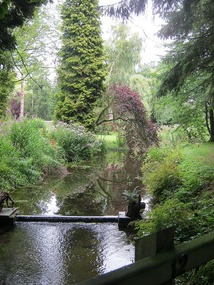
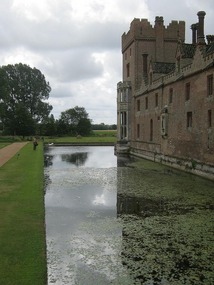
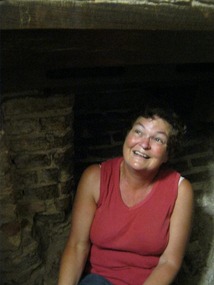
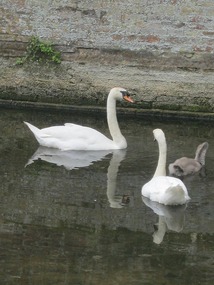
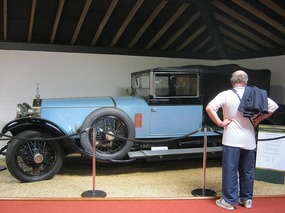
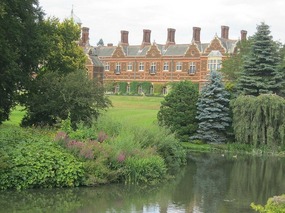
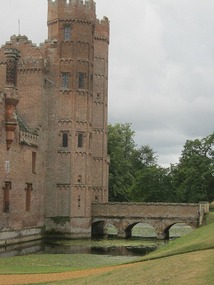



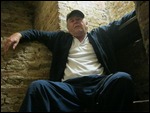
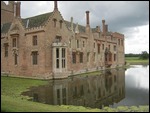
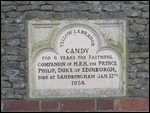
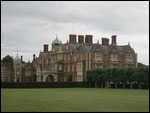
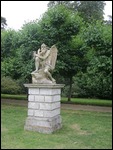
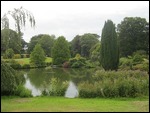
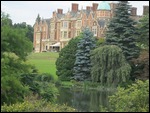
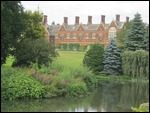
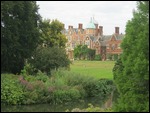
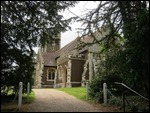
2025-05-22